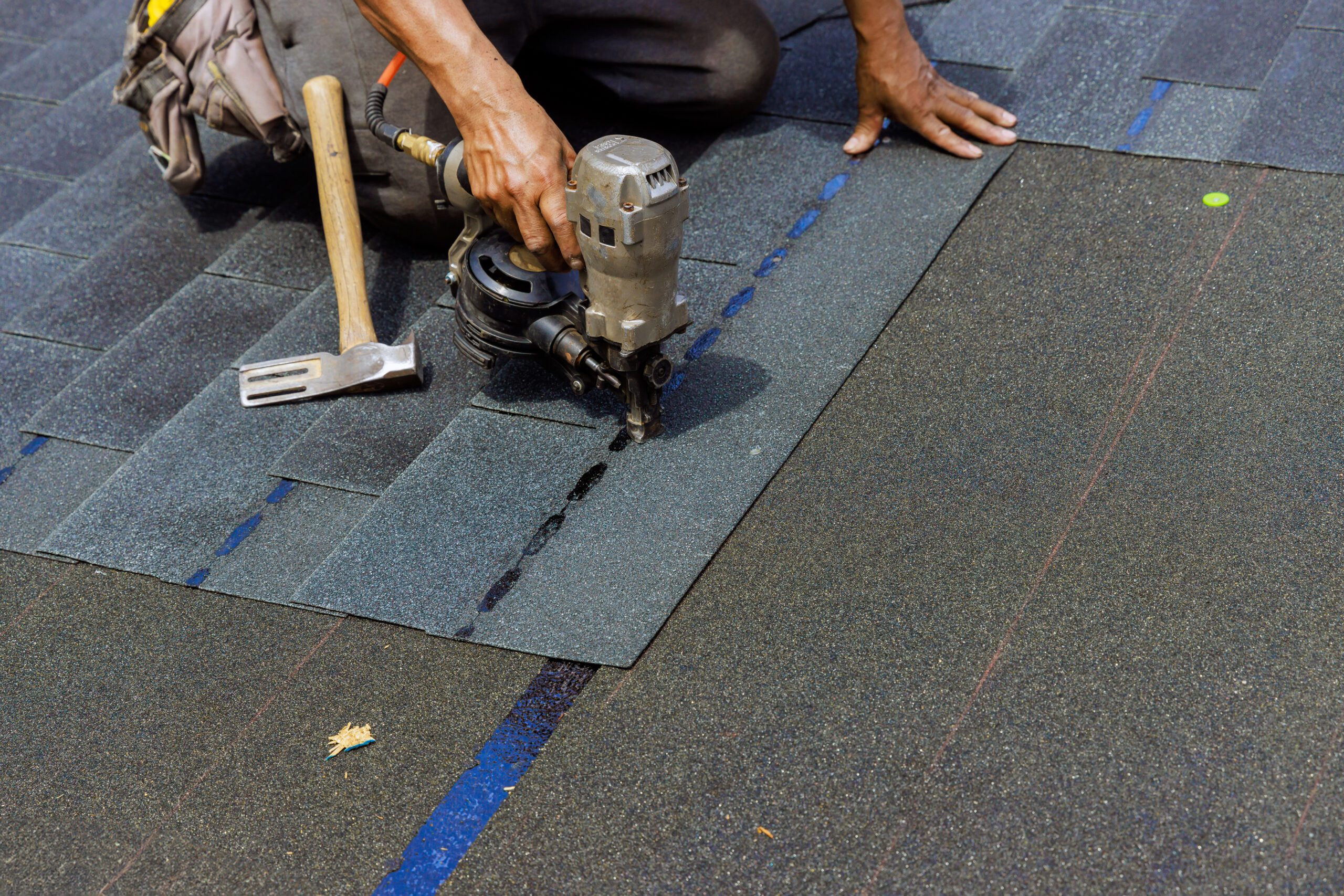Shingle and Ready to Mingle: Your Guide to Roof Installation
Finding ‘The One’ for Your Home
Selecting the right roofing material is one of the most important decisions homeowners face. Your roof does more than protect you from the elements—it defines your home’s aesthetic, influences energy efficiency, and even affects property value. With so many options on the market, choosing the best material for your home can feel overwhelming.
Hammersmith Roofing & Construction has been helping Richmond homeowners make the best roofing decisions for years. Whether you own a historic home that needs slate roofing, a commercial building that requires a flat roofing system, or a traditional house best suited for asphalt shingles, we guide our clients toward the most durable, efficient, and visually appealing solutions.
But selecting the right roofing material isn’t just about functionality—it’s about finding “the one.” Just like in relationships, you want a roof that is dependable, attractive, and built for the long haul. This guide will break down the best roofing materials available, their pros and cons, and how to determine which one is the perfect match for your home.

What to Look for in Your ‘Perfect Match’ Roofing Material
Just as you wouldn’t settle in a long-term relationship without considering compatibility, you shouldn’t settle for a roof without evaluating key factors. The best roofing material should align with your home’s needs, climate, and budget. Here are the critical elements to consider when selecting a roof:
Durability and Protection
Your roof is your home’s first line of defense. It must withstand various weather conditions, from extreme weather like high winds, cold, and heavy rain to moderate climates where gradual wear and tear can take its toll over time. Some materials, such as slate and metal, are designed for longevity, while others, such as asphalt shingles, provide a more cost-effective but shorter-term solution.
Consider factors like:
- Moisture protection: Will the material resist moisture buildup, preventing leaks and structural damage?
- Wind resistance: Can it handle high winds without damage?
- Lifespan: Will it last a few decades or over a century?
Curb Appeal and Color Selection
A new roof can dramatically change a home’s appearance. The right color selection and roof covering should enhance your home’s architectural style, whether historic, modern, or traditional. Many materials come in a variety of colors, allowing homeowners to choose shades that complement their exterior paint, siding, or brickwork.
Energy Efficiency and Cooling Costs
Roofing materials affect how efficiently your home retains or repels heat. Some materials, such as metal roofs and specialized cool roofs, reflect sunlight and reduce cooling costs in the summer. Others, like wood shakes, provide natural insulation. In climates with hot summers and mild winters, choosing a roofing system designed for energy efficiency can significantly lower monthly energy bills.
Upfront Cost vs. Long-Term Investment
While initial roof installation costs vary widely, it’s essential to consider long-term expenses. Some materials require less maintenance and last much longer, ultimately saving homeowners thousands in roof replacement and costly repairs.
Meet the Roofing Contenders
Not all roofing materials are created equal. Each has its strengths and weaknesses, making some better suited for certain homes and climates than others. Below, we explore some of the most common roofing materials, their advantages, and which homeowners will benefit most from each choice.
Asphalt Shingles – The Popular Pick
Asphalt shingles are the most commonly used roofing material in the United States, and for good reason. They are affordable, easy to install, and available in various color pairings and styles.
Pros:
- Budget-friendly with a lower initial cost
- Available in architectural shingles and 3-tab shingles
- Relatively easy to install and replace
- Aesthetically versatile, complementing many home styles
Cons:
- Moderate lifespan, often lasting 15-30 years
- Susceptible to damage from extreme weather and moisture levels
- Not as environmentally friendly as some other materials
Best for: Homeowners seeking an affordable and practical option that provides reliable protection.
Metal Roofs – The Durable, Eco-Friendly Choice
Metal roofs have gained popularity due to their durability, energy efficiency, and modern aesthetic. Available in steel, aluminum, and copper, metal roofing can last 40-70 years with minimal maintenance.
Pros:
- Extremely durable and can withstand inclement weather
- Reflects heat, lowering cooling costs
- Fire-resistant and lightweight
- Often qualifies for tax credit incentives
Cons:
- Higher upfront cost compared to asphalt shingles
- Can be noisy in heavy rain without proper insulation
- May require specialized installation
Best for: Homeowners looking for an eco-friendly, long-term investment that saves money on energy bills.
Slate Roofing – The Timeless Classic
Slate roofing is often the top choice for historic and luxury homes. This natural stone material is exceptionally durable and can last over 100 years, making it one of the longest-lasting roofing options.
Pros:
- Provides a distinctive, upscale look ideal for historic properties
- Incredibly resistant to moisture and temperature fluctuations
- Minimal maintenance required
- Can last a lifetime with proper care
Cons:
- One of the most expensive roofing options
- Heavy material that may require additional structural support
- Installation requires specialized expertise
Best for: Owners of historic or high-end homes prioritizing longevity and timeless elegance.
Cedar Shakes & Wood Shingles – The Rustic Romantic
For homeowners who prefer a natural aesthetic, cedar shakes and wood shingles offer a warm, rustic charm. These materials provide excellent insulation but require regular maintenance to prevent moisture buildup and rot.
Pros:
- Visually appealing and blends beautifully with natural surroundings
- Provides superior insulation, keeping homes warm in winter and cool in summer
- Long-lasting when properly maintained
Cons:
- Requires regular upkeep to prevent mold and moisture levels from causing decay
- More expensive than asphalt shingles
- Not as fire-resistant as other materials without treatment
Best for: Homeowners looking for a cozy, rustic aesthetic who don’t mind extra maintenance.
Flat & Low-Slope Roofing – The Modern Minimalist
Flat and low-slope roofs are commonly used for commercial buildings but are also becoming increasingly popular for modern-style homes. To ensure proper moisture protection and durability, these roofs require specialized materials such as TPO, EPDM, and modified bitumen.
Pros:
- Ideal for contemporary architecture
- Often more affordable for large buildings
- Allows for rooftop installations such as solar panels
Cons:
- Requires careful installation to prevent water pooling
- May need more frequent maintenance compared to sloped roofs
Best for: Businesses and homeowners with a contemporary design preference.
Why the Right Roofing Contractor Matters
Even the best roofing material won’t perform well if installed incorrectly. A poorly executed roof installation process can lead to leaks, structural damage, and a shorter lifespan for your new roof. That’s why choosing the right roofing contractor is just as important as selecting the right materials.
What to Look for in a Roofing Contractor
- Experience and Reputation—Work with reputable roofing contractors who have a proven track record of successful projects. Look for companies with a history of quality workmanship.
- Licensing and Insurance—A qualified professional should have proper licensing and insurance, which ensures compliance with applicable building codes and protects homeowners from liability.
- Knowledge of Materials — A skilled professional roofer should understand the specific requirements of different roofing materials, such as asphalt shingles, metal, slate, or wood shakes.
- Permits and Regulations — Ensure your contractor handles building permits and adheres to local roofing system component regulations.
- Detailed Estimates and Contracts—A reliable roofing professional will provide straightforward pricing and outline all aspects of the roofing project, from materials to labor.
Need Help Choosing? Hammersmith Roofing Has You Covered
At Hammersmith Roofing & Construction, we specialize in installing and repairing a wide variety of roofing materials to fit Richmond homes. Our experienced roofers ensure each project meets the highest standards, from proper installation to long-term performance.
If you’re unsure which type of roofing material is right for your home, contact us today for a free consultation.





